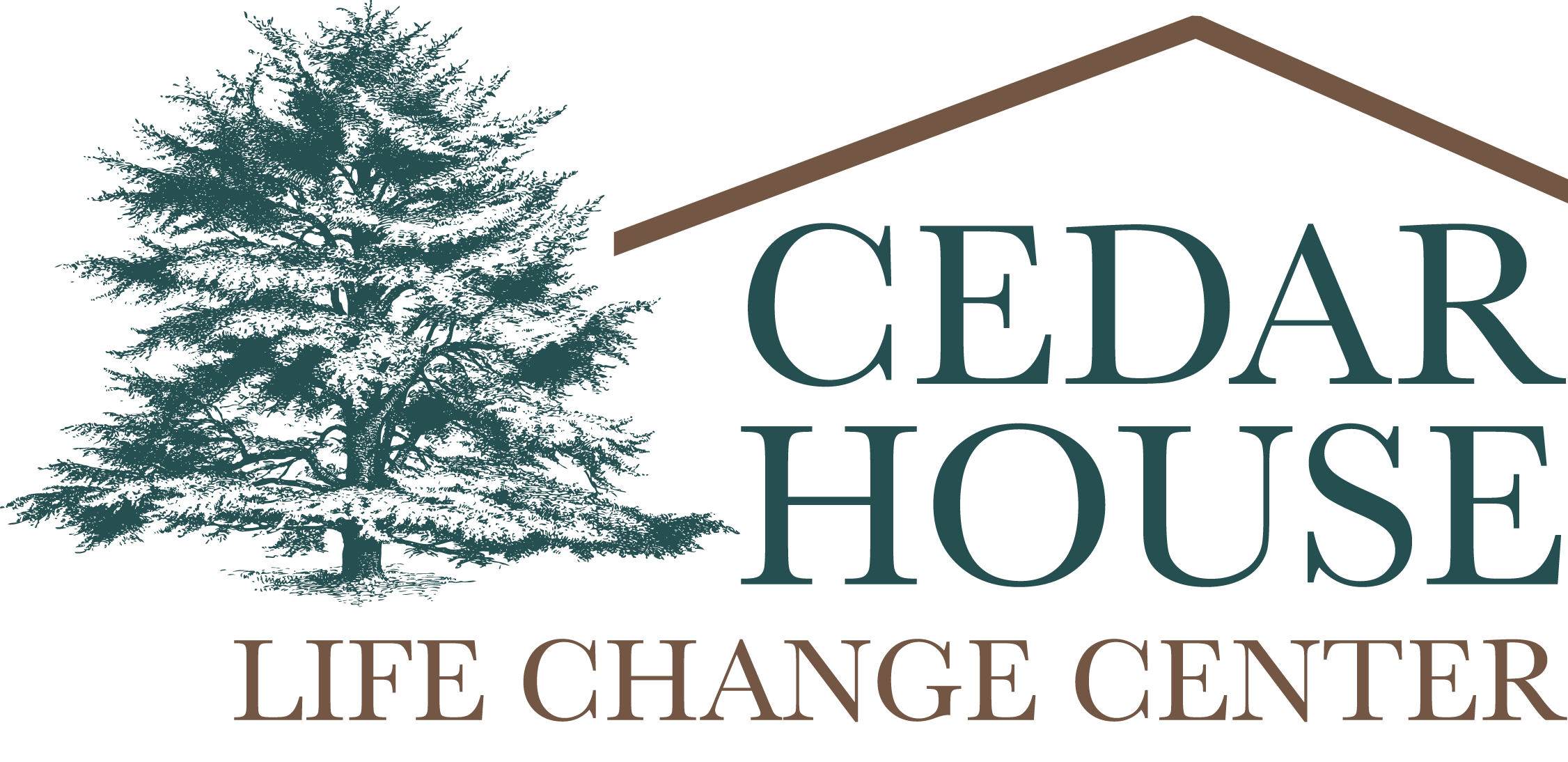Cedar House Life Change Center embraces evidence-based treatment as the most effective approach to recovery, especially when combined with other self-help methodologies, like the 12 Steps to Recovery. Continue reading to learn more about the 12 Steps.
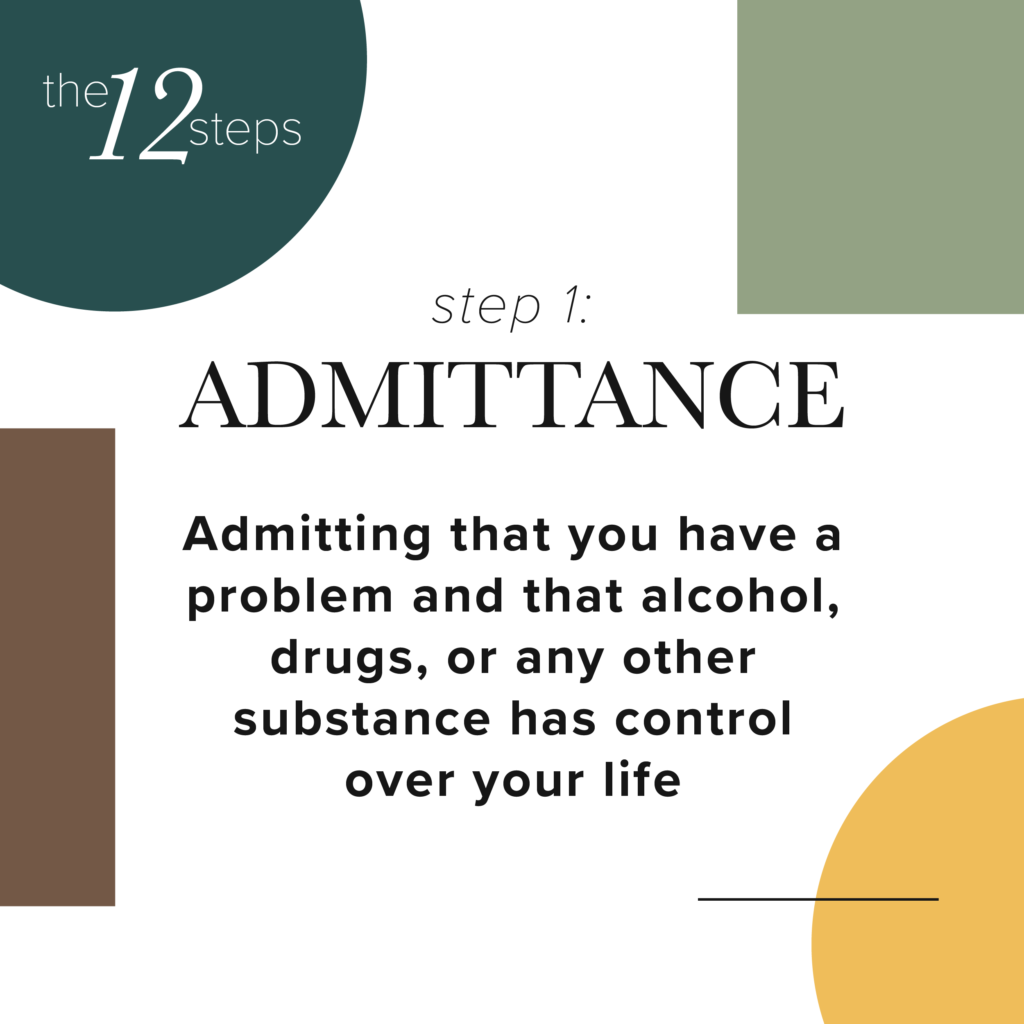
Step 1: ADMITTANCE
If you’ve ever heard someone say, “The first step is admitting you have a problem,” now you know where it comes from. Admittance, acknowledgement or honesty are all different ways of introducing the first step, which is to admit to yourself that you are powerless over alcohol or another substance or behavior, and that your life has become unmanageable.

Step 2: FAITH
Acknowledging a higher power allows you to lay your ego aside and accept that you need guidance and assistance throughout life. This offers a form of support when things get tough, and in the process of addiction recovery, things will get tough. The second step is about HOPE – hope that recovery is possible and a sober life is attainable.
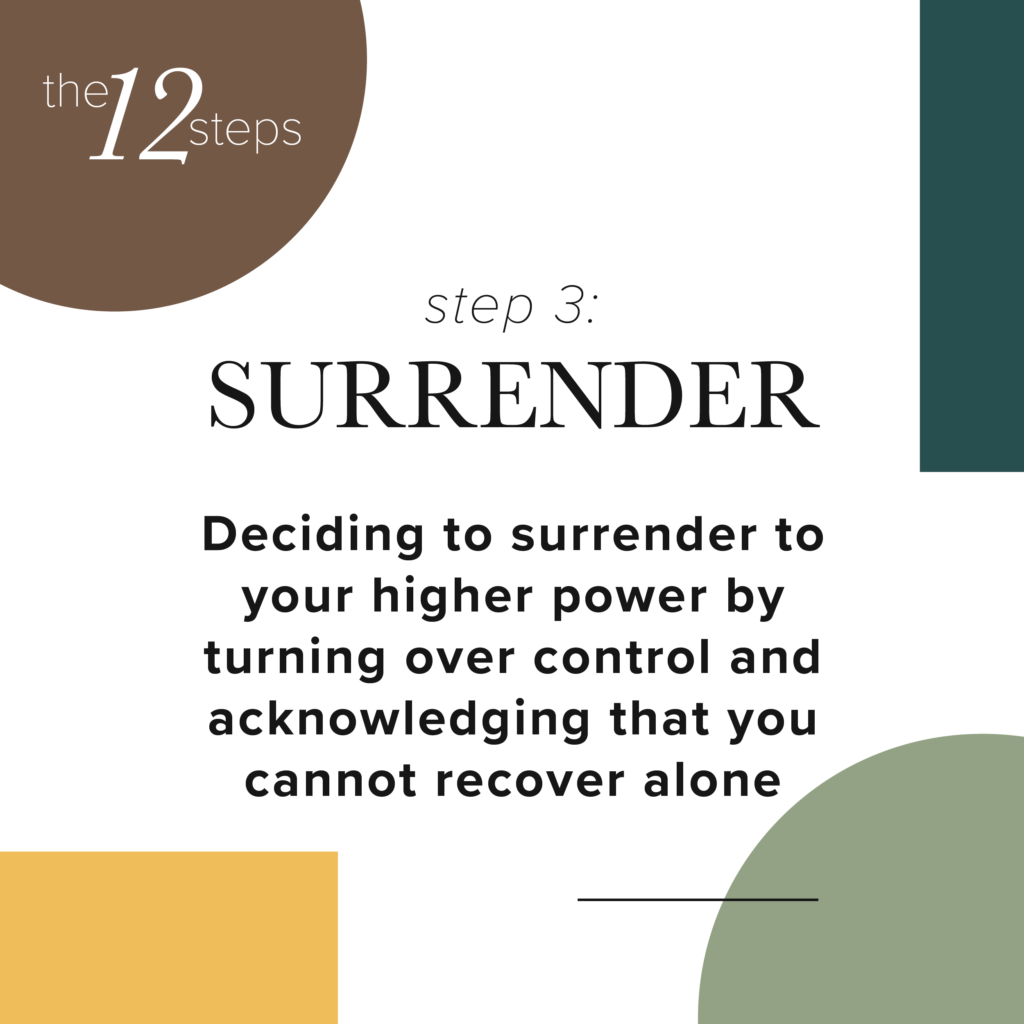
Step 3: SURRENDER
Unlike the first two steps that focused on reflection and acceptance, step three is about taking action, making a decision and executing it. Surrender is key to successful recovery. This is a critical step because it ensures that you know that your addiction is bigger than you, and you need help to take control of your life back from the addiction.
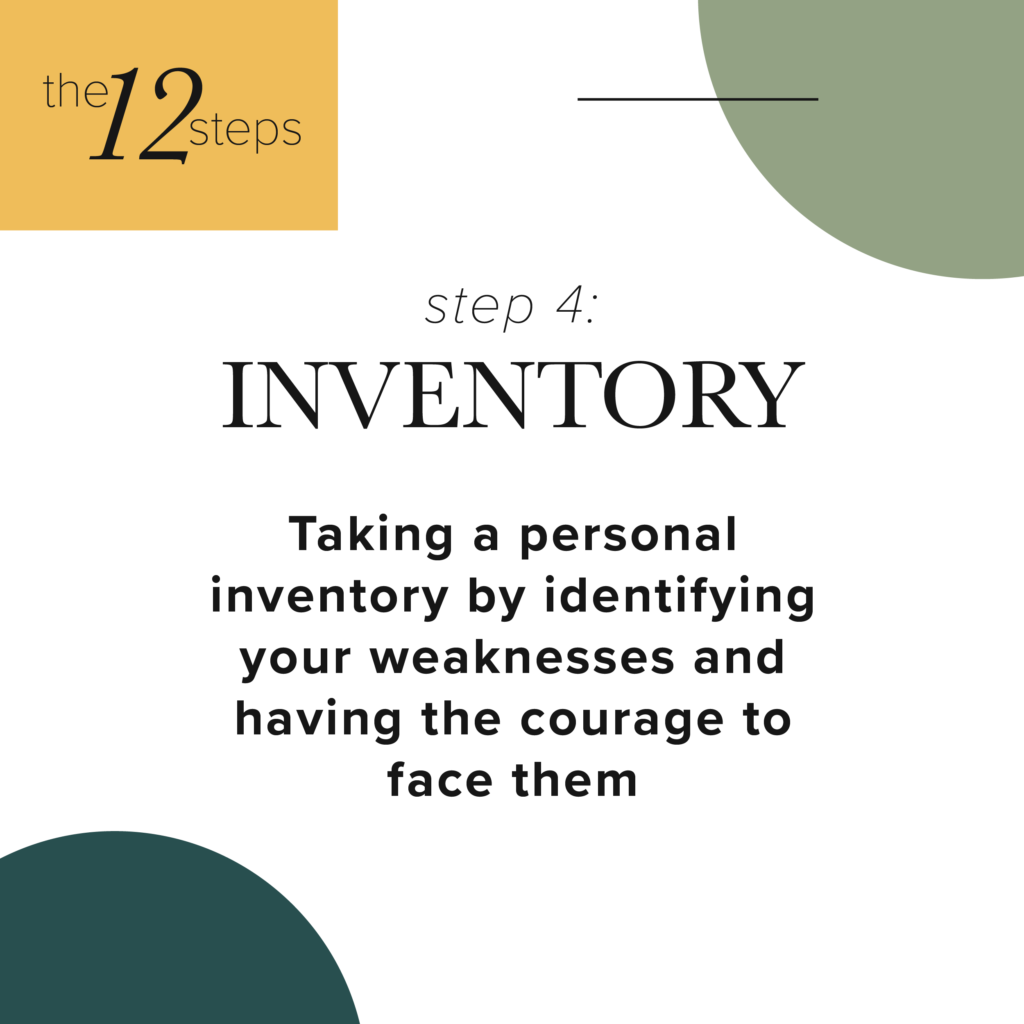
Step 4: INVENTORY
A searching and fearless moral inventory requires you to take a good hard look at yourself, the choices you have made, and whether or not they are congruent with the beliefs you hold and the person you want to be. Before you can make changes you have to understand what needs to be changed.
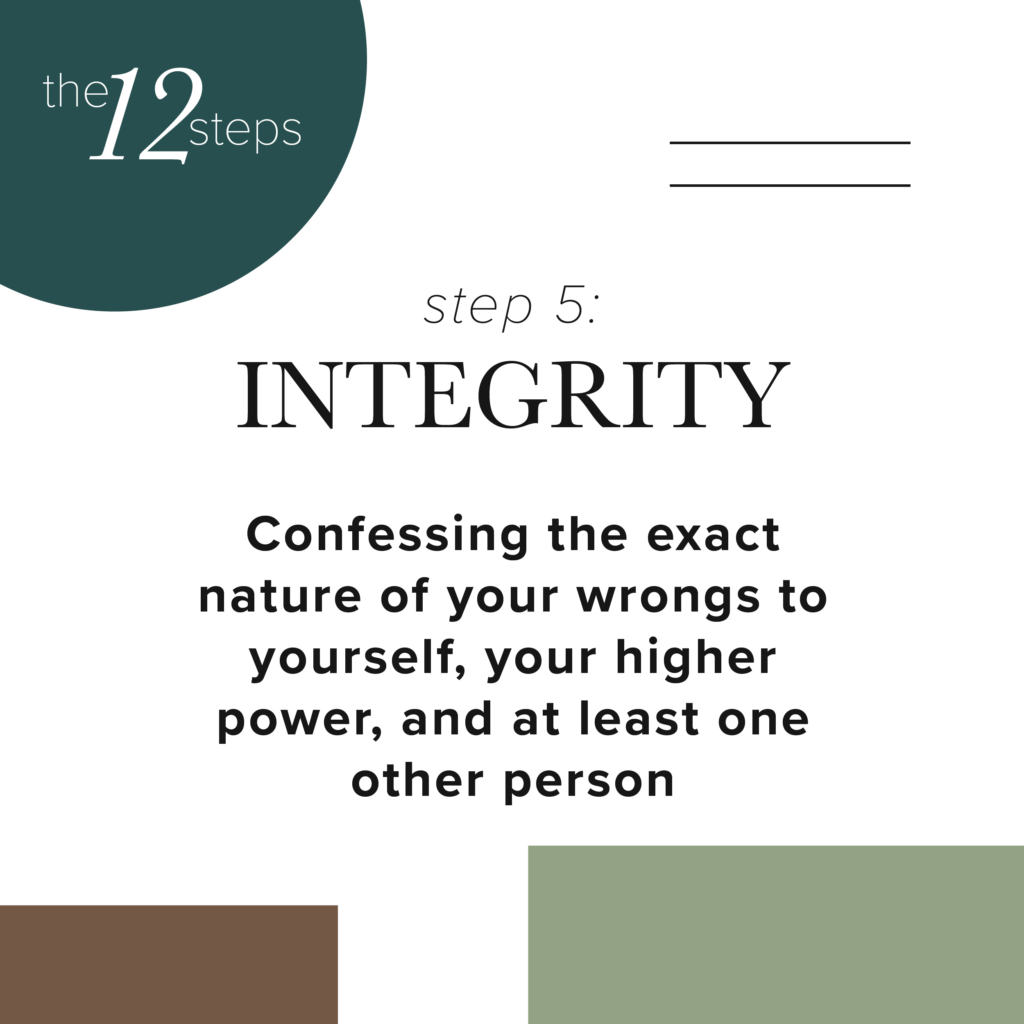
Step 5: INTEGRITY
Making a confession to a higher power, yourself and another living person can lift a great burden and start to resolve feelings of guilt or shame that may otherwise lead you back down a dark path. While confession may seem simple and quick, after the previous steps including admission, it’s not.
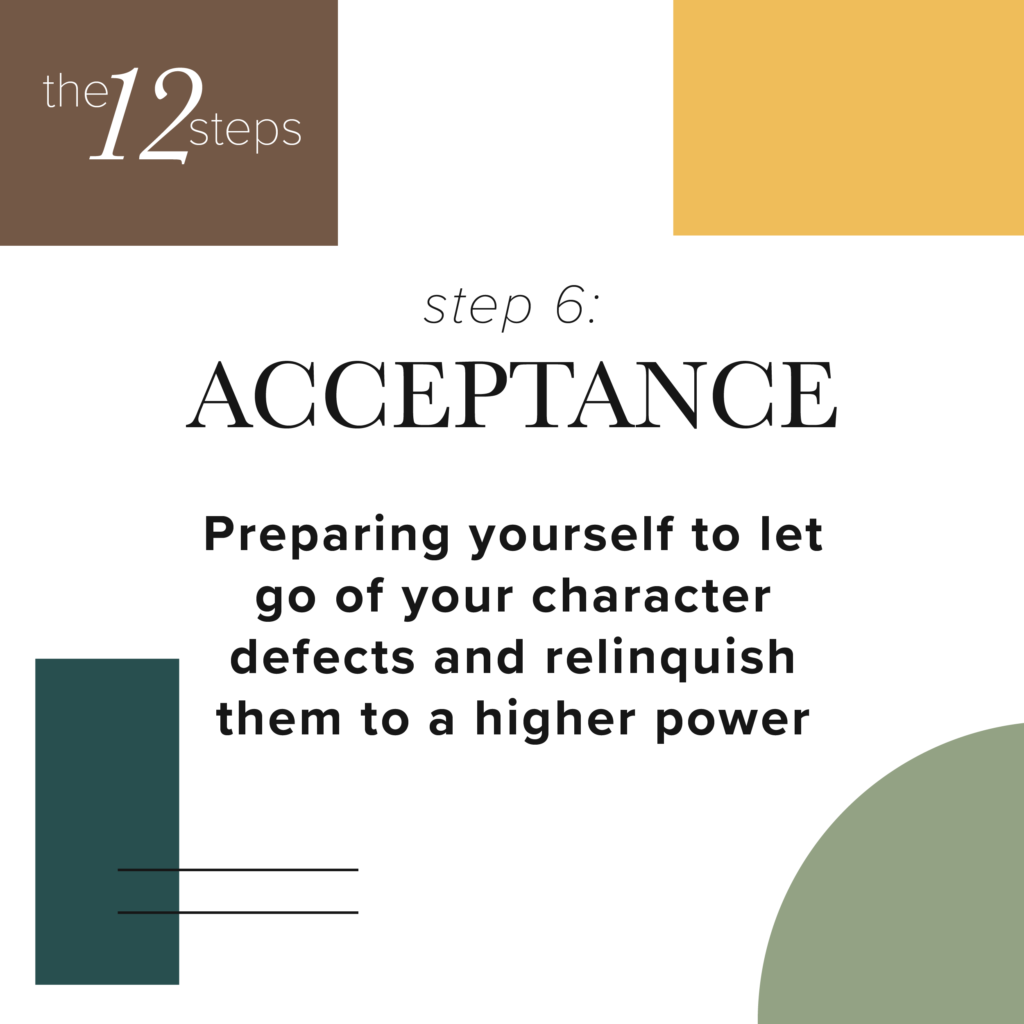
Step 6: ACCEPTANCE
Allowing a higher power to make corrections regarding your shortcomings allows you to let go of them. This is not always easy to do as these behaviors and shortcomings have likely been a trusted coping mechanism for a long time.

Step 7: HUMILITY
Much like step 3, this step is the action step following the realization of our shortcomings. Bear in mind, we’ve learned a lot about addiction since the 1930s, and we know now that addiction is caused by many complex factors including genetics and environment or circumstances.
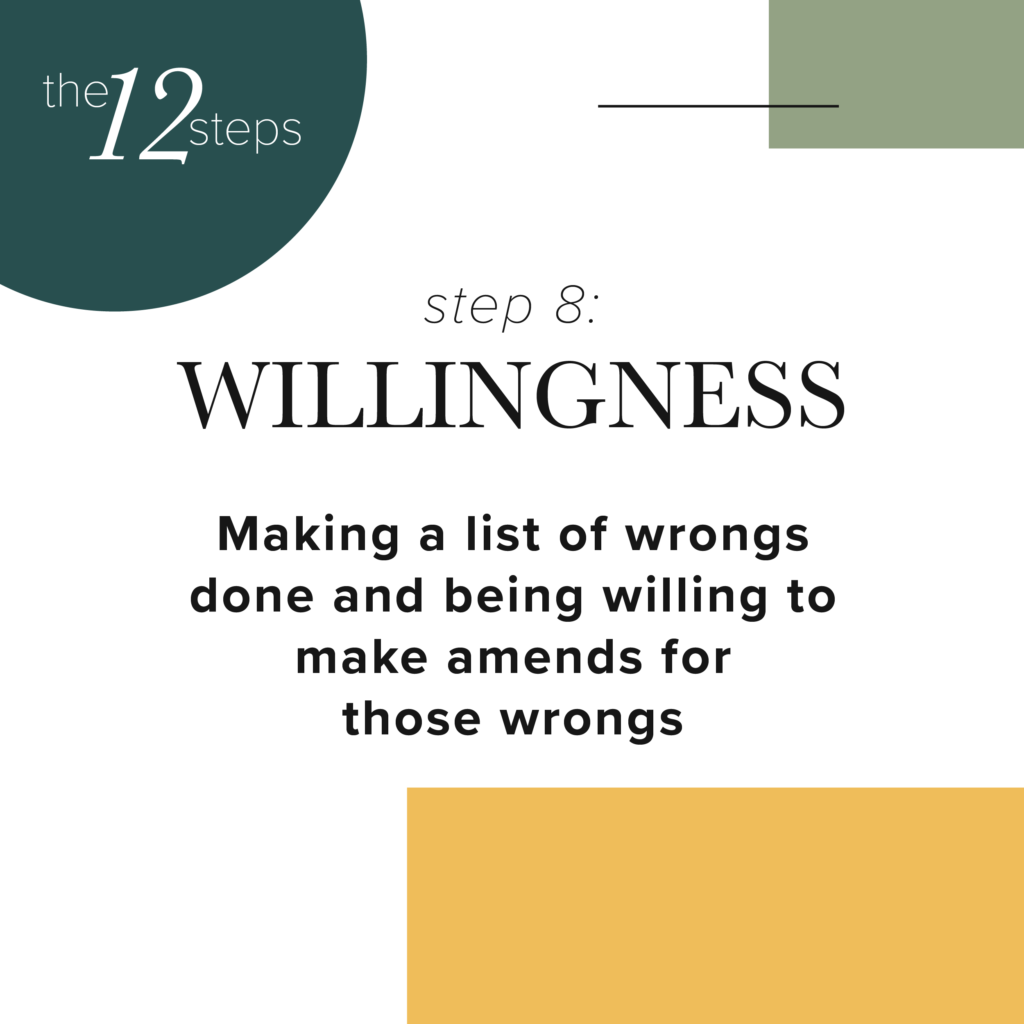
Step 8: WILLINGNESS
A thorough and honest list of the specific ways addiction has hurt you and your loved ones helps you realize the full extent of the damage addiction has caused to your life and the lives of others. This step is meant to be an honest account of how addiction has negatively impacted your life and allows for willingness to repair the damage.
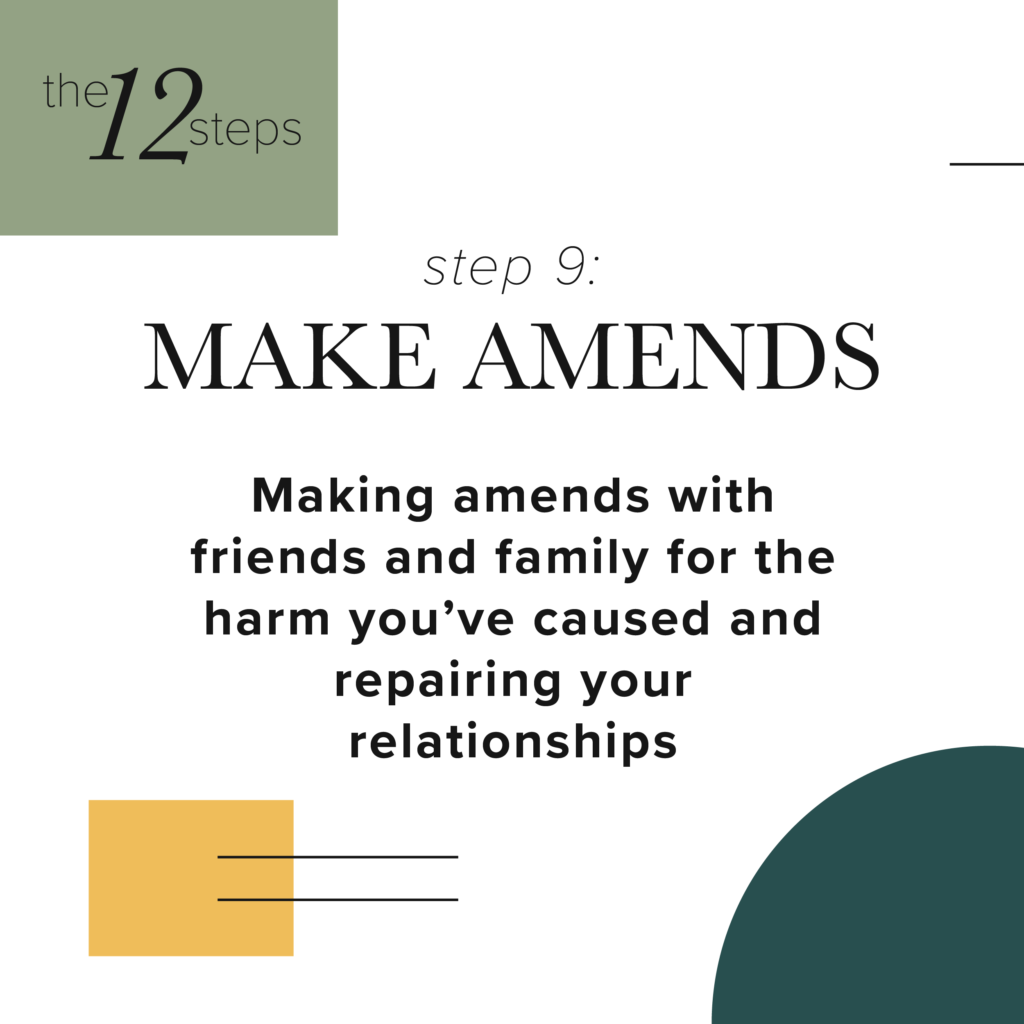
Step 9: MAKE AMENDS
Forgiveness is incredibly powerful for both the offender and the one who was offended against. This is not an “apology tour” but rather a thoughtful and premeditated exercise in trying to make right with this people, so long as doing so doesn’t cause any harm. Not all people will offer forgiveness, and that is okay; a sincere apology acknowledges that you understand that it was wrong and regret it.
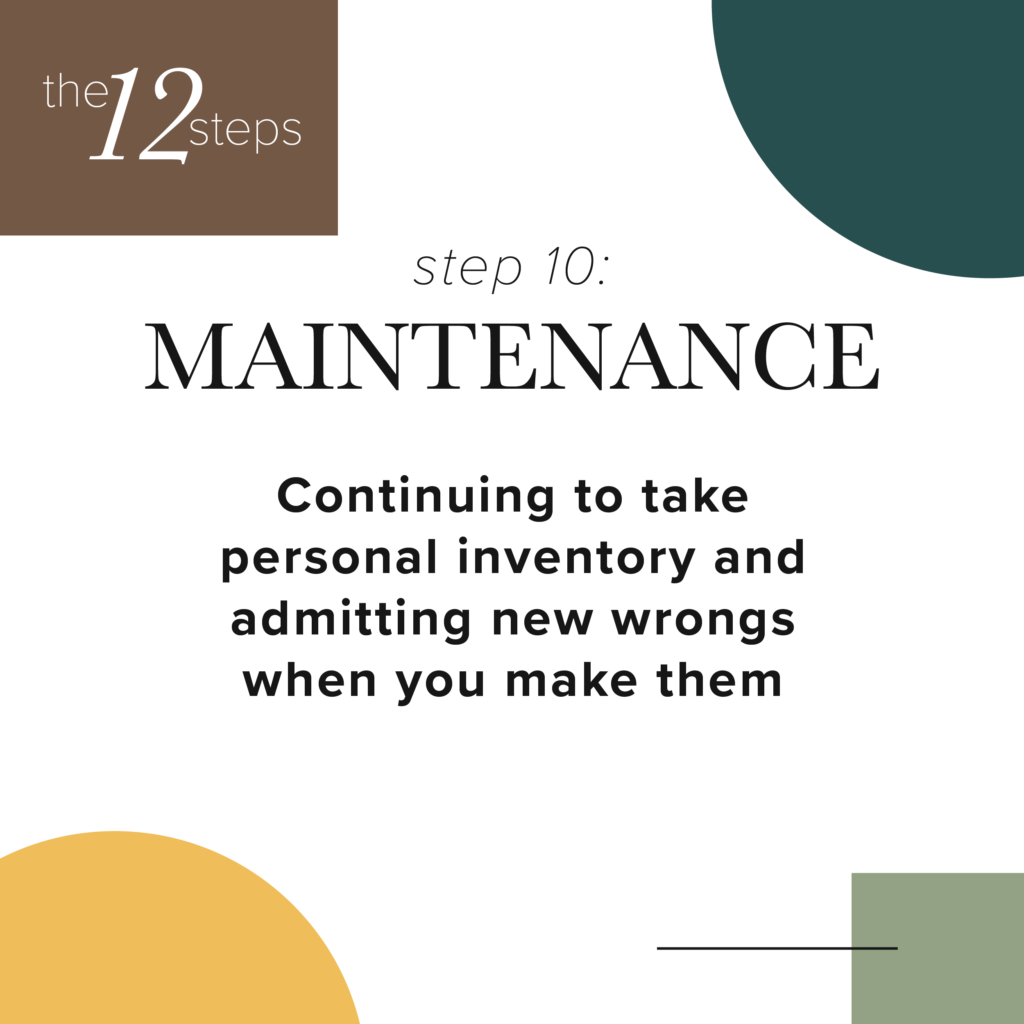
Step 10: MAINTENANCE
The work doesn’t stop after step 9 because 12-Step Recovery is designed to be a new way of living. You’ll need to continue making amends and admitting wrongs from here on out. Mistakes will be made continually, but it is vigilance that allows us to stay on track and continue growing.
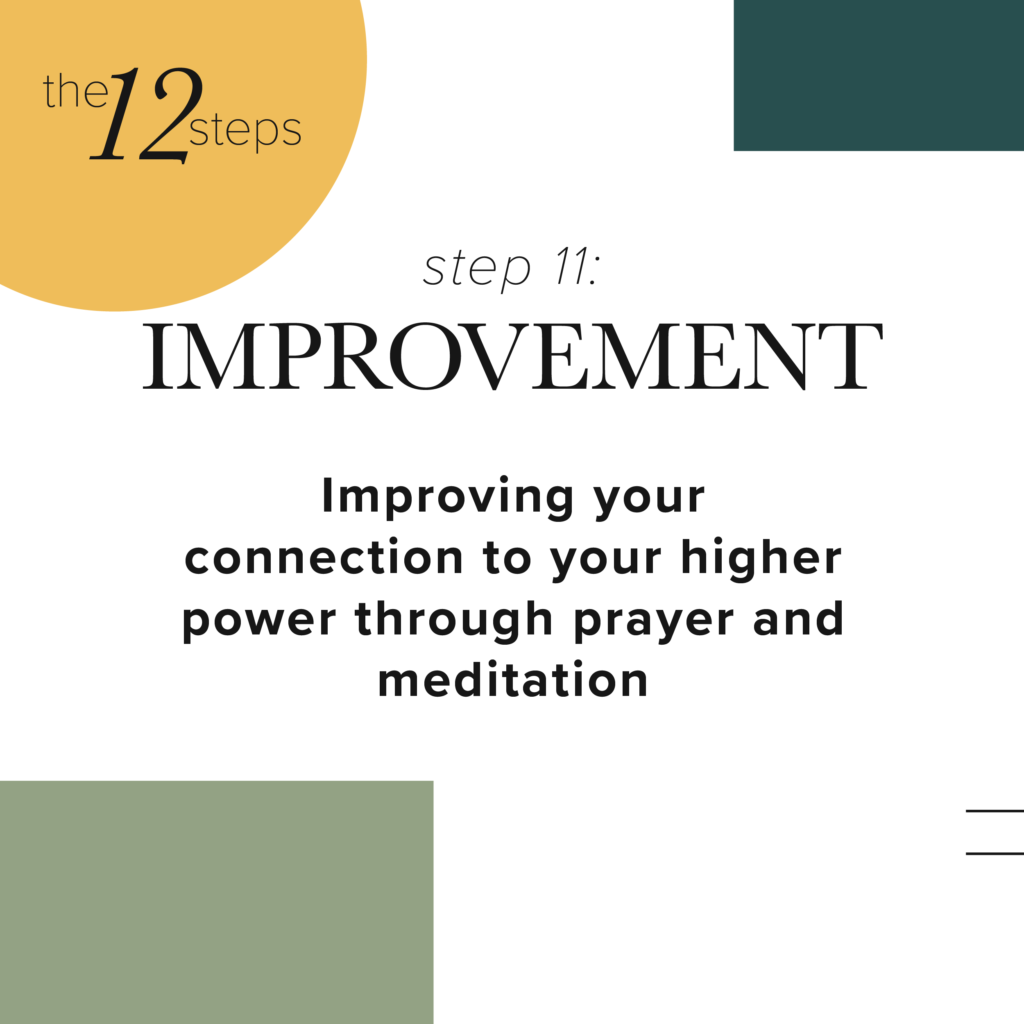
Step 11: IMPROVEMENT
Prayer is speaking to your higher power, while meditation is listening. This step acknowledges that recovery is a continuous process and something that is never really “done”. By the time you reach the 11th step, you most likely have found a deep spiritual path that will be the guiding way for the rest of your life.
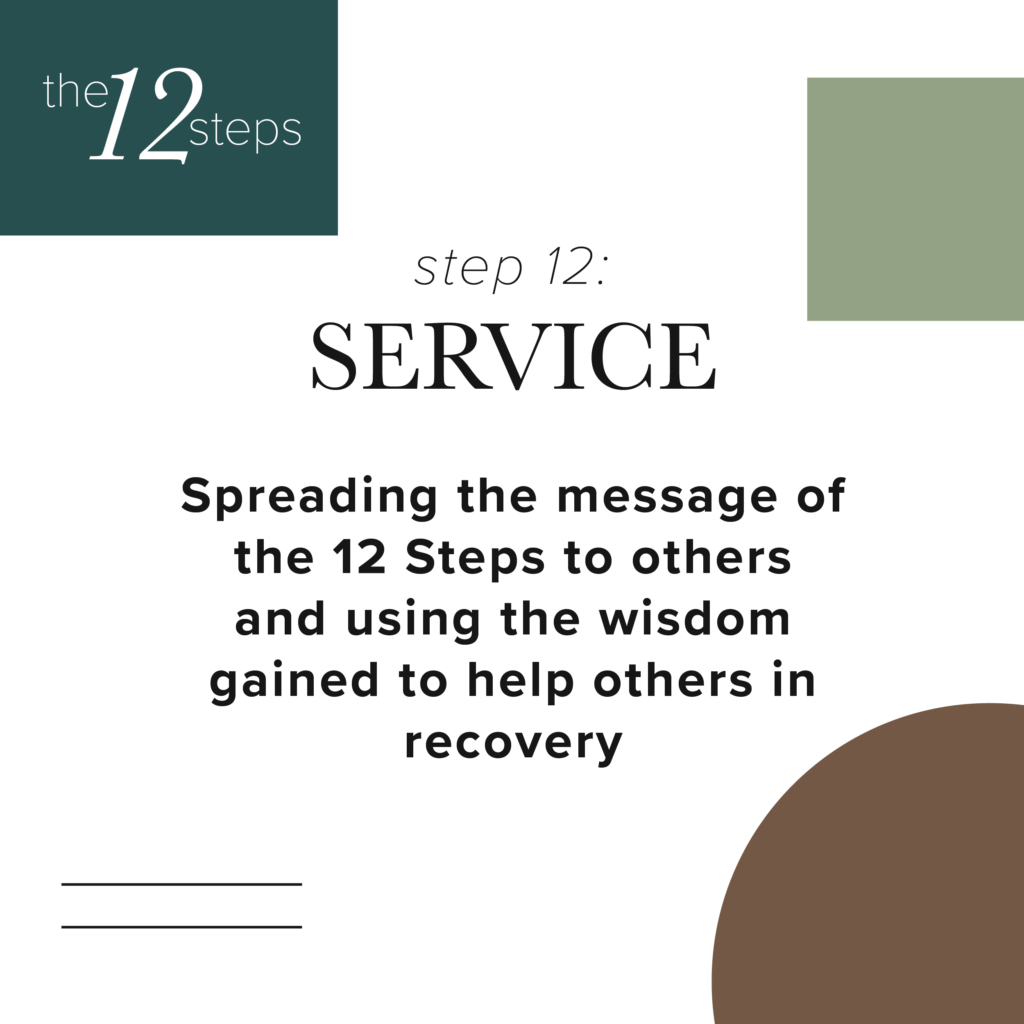
Step 12: SERVICE
The best people to help others are those who have been there themselves. Addiction is not “cured” once the 12 Steps are completed, and recovery will be a lifelong process. You may have to repeat all or some of the steps because there may have been issued that were not realized or worked through the first time. This is alright and encouraged.
